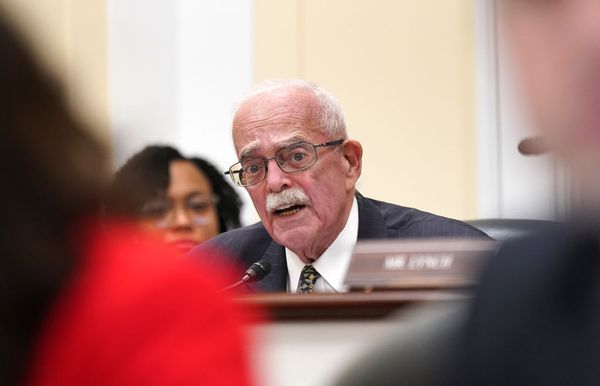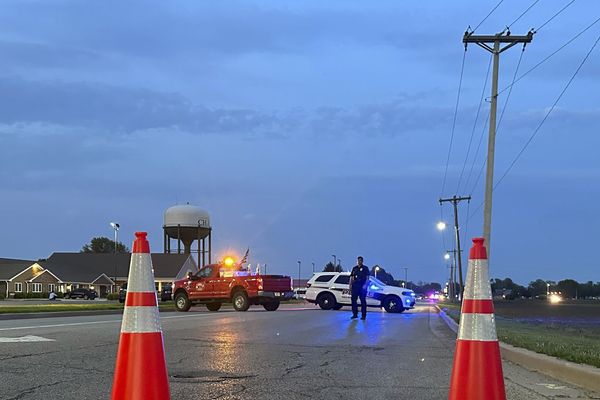
When Paul Austin and Tenisha Tate-Austin had their home assessed by an appraiser in 2020, they learned it was worth $995,000. So the Black couple, who purchased their home in December 2016 and spent thousands in renovation costs over the years, decided to get a second opinion. They “white-washed” their property and had a white friend pose as the homeowner. Weeks later, a different appraiser assessed the house’s value at $1,482,500.
The couple sued for discrimination.
The Austins, whose case was featured in the ABC documentary Our America: Lowballed, settled a federal civil rights lawsuit on Tuesday against Janette Miller and Miller and Perotti Real Estate Appraisals Inc, the San Francisco Chronicle reported.
They will receive an undisclosed amount in financial compensation from Janette Miller and her firm, Miller and Perotti Real Estate Appraisals, the publication reported. Miller is also required to attend housing discrimination prevention training and to watch the documentary.
Their discrimination case, just one of many throughout the US, offers a glimpse into the ways housing assessments are riddled with systemic racism, exacerbating inequities among homeowners seeking to determine their property’s worth. It exposes how white homeowners are valued while homeowners of color are devalued depending on the neighborhoods where they reside, a stark reminder of the longstanding toll federal policies like redlining had in dividing American cities.
Those devaluations exacerbated the already-growing wealth gap between families of color and white ones. In 2021, an analysis of more than 12m housing appraisals from Federal Home Loan Mortgage Corporation, also known as Freddie Mac, found that homes in Black neighborhoods were devalued as much as 23% on average compared to homes in white neighborhoods.
What’s more, in a 2022 study of recently public Federal Housing Finance Agency appraisal data published last November, researchers found that white homeowners were twice as likely to see their home values increase than owners of color.
Unlike previous studies, Junia Howell, a visiting professor of sociology at the University of Illinois Chicago, and Elizabeth Korver-Glenn, an assistant professor of sociology at Washington University in St Louis, analyzed more than 47m appraisal reports collected from licensed appraisers between 2013 and 2022. The data had been made public for the first time, a decade after Howell and Korver-Glenn first pursued it.
They found the gap between the home values of white homeowners and homeowners of color widened over the last decade. When unpacked by race, the results were staggering: appraisers valued homes in white neighborhoods two and half times more than homes in Black neighborhoods. For homes in Latino neighborhoods, the gap is larger, despite the fact that the value of the Latino residents’ homes were bigger than Black residents’.
And the largest appraisal gap came between the value of homes in white neighborhoods and those in American Indian, Alaska Native, south-east Asian and Pacific Islander communities.
Answer (5): Yes, it does. Appraisers evaluate American Indian/Alaska Native and Southeast Asian and Pacific Islander neighborhoods as least valuable. pic.twitter.com/hech5WvrmW
— Elizabeth Korver-Glenn (@elizabethkaygee) November 2, 2022
Between 2020 and 2022, driven by the pandemic and monetary policy choices, the average value of a home in a white neighborhoods rose more than twice that of homes in neighborhoods of color.
Howell said she and Korver-Glenn had begun studying when they looked at the ways appraisers approached their valuations in Houston, Texas. They interviewed more than 100 real estate professionals in Houston and found that the ways appraisers described the qualities of homes in a neighborhood were “racialized” by using coded language.
But it went beyond the way individual appraisers determined home values and pointed to structural racism: when controlling for property size, quality and neighborhood factors at identical properties in white, Black and Latin neighborhoods, they found that homes in white Houston neighborhoods were worth more than twice that of similar properties in Black and Latino neighborhoods in 2015.
Years later, Howell and Korver-Glenn found that among the 107 largest metropolitan areas from 1980 to 2015, homes in white neighborhoods were valued as $246,000 more than comparable homes in socioeconomically comparable communities of color. And those values in white neighborhoods rose seven times that of those in neighborhoods of color.
“The race of the neighborhood increasingly mattered,” Howell said. “It demonstrated that we were not making progress. We were going in the opposite direction.” She added that the current appraisal process, which depends on the notion that a home’s value is determined by where it’s located, is a “a contemporary process perpetuating inequality”.
In a statement to the San Francisco Chronicle through their attorneys, Tate-Austin called the erasure of their identity just to get a higher value on their home a “wrenching experience”.
“We hope by bringing attention to our case and this lawsuit settlement, we can help change the way the appraisal industry operates,” Tate-Austin said.
Howell noted the cases that captured attention and emerged in public lawsuits indicated that there were far more cases among the millions of appraisals that take place each year where disparate home valuations go unnoticed.
“The ones that caught the nation’s eye are the ones that we can comprehend more easily, because we understand that discourse for individual racism,” Howell said. “What is harder to wrestle with as a nation is that it makes no sense that Black communities have such radically different home values than neighboring or close by.”
“Our entire housing system is built on white supremacy,” she added.







